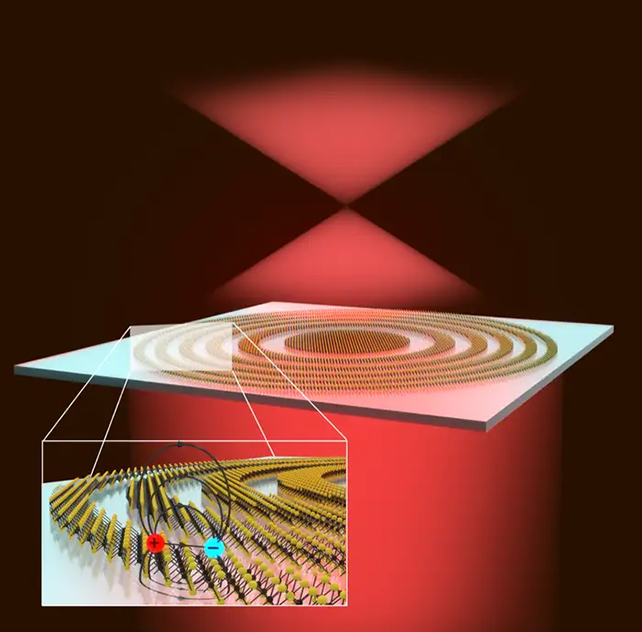Scientists created the world’s thinnest lens
- June 17, 2024
- 0
A quantum phenomenon has allowed scientists to develop a lens just three atoms thick, believed to be the thinnest ever made. Ironically, the innovative approach allows most wavelengths
A quantum phenomenon has allowed scientists to develop a lens just three atoms thick, believed to be the thinnest ever made. Ironically, the innovative approach allows most wavelengths

A quantum phenomenon has allowed scientists to develop a lens just three atoms thick, believed to be the thinnest ever made. Ironically, the innovative approach allows most wavelengths of light to pass through; This is a feature that has great potential in fiber optic communications and devices such as augmented reality glasses.
Researchers who invented the lenses from the University of Amsterdam in the Netherlands and Stanford University in the USA say that their innovations will advance research on such lenses as well as miniature electronic systems.
“The lens can be used in applications where the image through the lens should not be blocked, but where a small fraction of the light can be used to collect information,” says nanoscientist Jorik van de Groep from the University of Amsterdam.

Instead of using the curved surface of a transparent material to bend light in the refractive process, incoming waves are focused by a series of grooved edges through diffraction. This technology, known as a Fresnel lens or zone plate lens, has been used for centuries to produce thin, lightweight lenses such as those used in lighthouses.
To give the technology a quantum boost, the research team etched concentric rings into a thin layer of semiconductor called tungsten disulfide (WS).2). when is ws2 It absorbs light, its electrons moving in a way that leaves a gap that can be seen as a kind of particle.
Together, the electron and its “hole” form what is known as an exciton, which has properties that contribute to the efficiency of focusing light on very specific wavelengths while allowing other wavelengths to pass through unchanged. The size of the rings and the distance between them allowed the lens to focus red light to a distance of 1 millimeter. The team discovered that while the lens operated at room temperature, its focusing capacity became even more efficient at lower temperatures.
Next, the researchers want to conduct additional experiments to see how the behavior of the excitons can be further manipulated to improve the efficiency and capabilities of the lens. Future research could include changes in electrical charge as well as optical coatings that could be applied to other materials, for example.
“Excitons are very sensitive to the charge density in the material, and so we can change the refractive index of the material by applying a voltage,” says Van de Groep. The study was published on: Nano Letters.
Source: Port Altele
As an experienced journalist and author, Mary has been reporting on the latest news and trends for over 5 years. With a passion for uncovering the stories behind the headlines, Mary has earned a reputation as a trusted voice in the world of journalism. Her writing style is insightful, engaging and thought-provoking, as she takes a deep dive into the most pressing issues of our time.